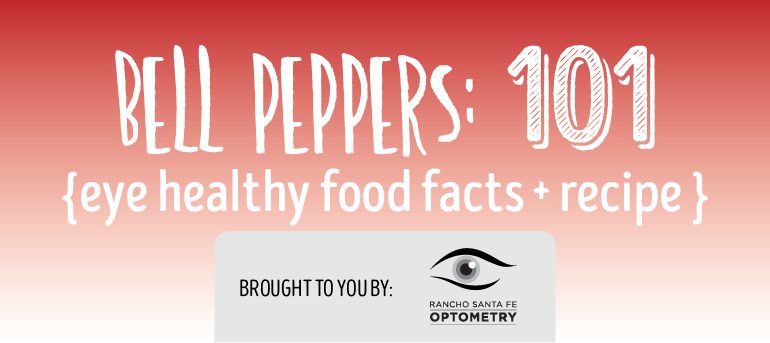Everything you wanted to know and more about: Bell Peppers
Bell peppers (Capsicum annuum) are the fruits of certain plants from the nightshade family.
They are related to chili peppers, tomatoes, and breadfruit, all of which are native to Central and South America.
Like their close relatives, the chili peppers, bell peppers are sometimes dried and powdered. In that case they are referred to as paprika (who knew?).
They are low in calories and exceptionally rich in vitamin C and other antioxidants, making them an excellent addition to a healthy diet.
Bell peppers come in various colors, such as green (unripe), red, yellow, and orange.
Green, unripe fruits have a slightly bitter flavor and are not as sweet as those that are fully ripe.
Vitamins to know about:
- Vitamin C: One medium-sized red bell pepper contains 169% of the RDA for vitamin C, making it one of the richest dietary sources of this essential nutrient.
- Potassium: An essential mineral that may improve heart health if consumed in adequate amounts
- Vitamin B6: Pyridoxine is the most common type of vitamin B6, which is a family of nutrients that are important for the formation of red blood cells.
- Vitamin K1: A form of vitamin K, also known as phylloquinone. It is important for blood clotting and bone health.
- Folate: Also known as folic acid, folacin, or vitamin B9, folate has a variety of functions in the body. Adequate folate intake is very important during pregnancy
- Vitamin E: A powerful antioxidant, essential for healthy nerves and muscles. The best dietary sources of this fat-soluble vitamin are oils, nuts, seeds, and vegetables.
- Vitamin A: Red bell peppers are high in pro-vitamin A (beta-carotene), which is converted into vitamin A in the body
Now why do we, here at Rancho Santa Fe Optometry, care so much about bell peppers? Because they’re good for your eyes! Here are a few things to know when it comes to peppers and your eyes…
The most common types of visual impairments include macular degeneration and cataracts, the main causes of which are old age and infections. However, nutrition may also play a significant role in the development of these diseases.
Lutein and zeaxanthin, carotenoids found in relatively high amounts in bell peppers, may improve eye health considerably when consumed in adequate amounts.
In fact, they protect the human retina, the light-sensitive inner wall of the eye, from oxidative damage.
A number of studies indicate that regular consumption of foods rich in these carotenoids (that bell peppers have) may cut the risk of both cataracts and macular degeneration.
Put simply, adding bell peppers to your regular diet may be an excellent way to lower the risk of visual impairments.
Want a great new recipe to try with these vitamin packed veggies? Eye Healthy Turkey Burger Recipe

Sources:
https://www.healthline.com/nutrition/foods/bell-peppers#section1
https://www.allaboutvision.com/recipes/turkey-burgers.htm
At Rancho Santa Fe Optometry we offer comprehensive eye examinations for all ages. With a focus on children’s vision and vision therapy, our doctors test for visual acuity, visual efficiency skills and visual information processing starting in early infancy. The practice also provides diagnosis, treatment and management of diseases that affect the human eye and visual system, including dry eye syndrome, diabetic retinopathy, cataracts, macular degeneration and keratoconus.


